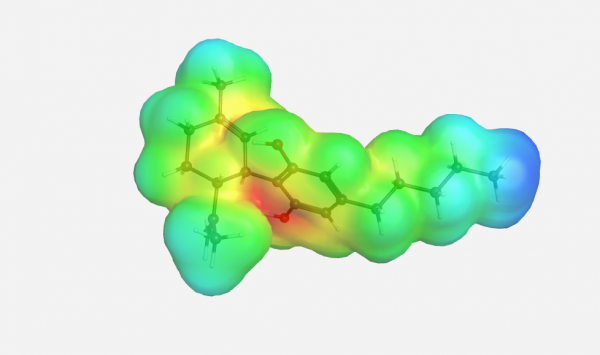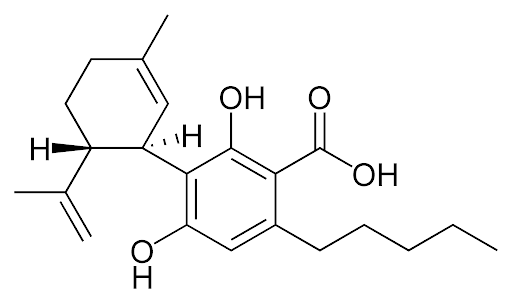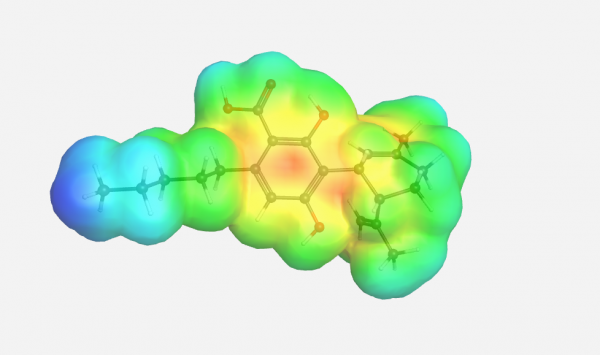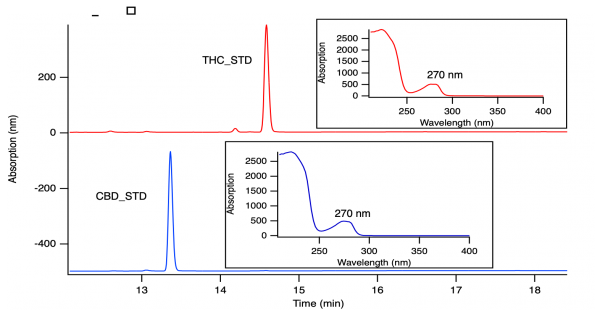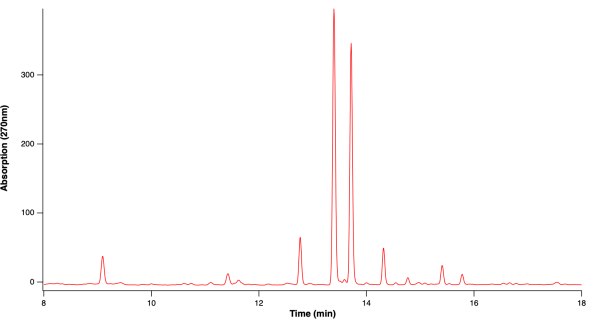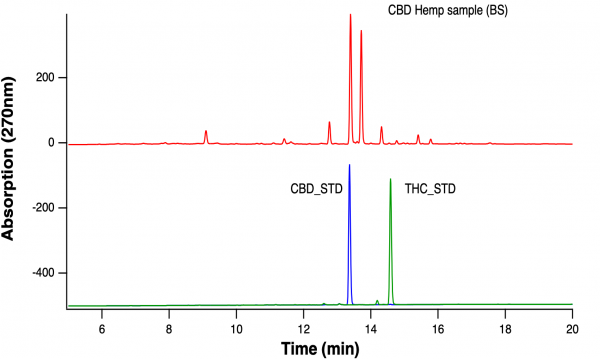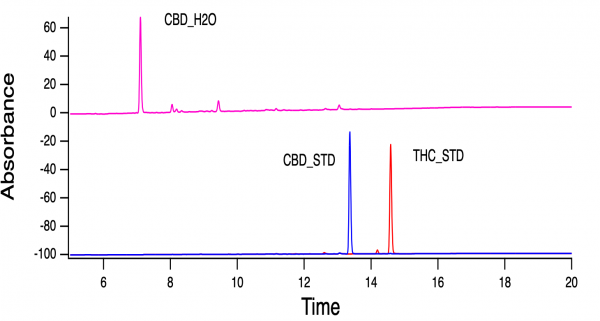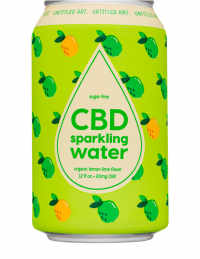Difference between revisions of "Cannabis Research"
| Line 30: | Line 30: | ||
::Cannabis plant material is collected with cannabinoids present in the sample. The sample is then manicured and grinned up by the Kozo grinder and then placed into a glass jar. The cannabis material is then weighed out to 0.1 grams or a 100mg on an analytical balance. The plant material is then placed into a falcon tube and 5mL of methanol is added to the tube. The falcon tube is then placed on the shaker for 30 minutes at the max RPM. After the shaking is finished the liquid material inside the tube is syringed up out of the tube using a filter syringe. The filter is then placed on to the syringe and the sample is then syringed into a HPLC sampling vial. The sample is now placed on the HPLC sampler along with the correct standards. | ::Cannabis plant material is collected with cannabinoids present in the sample. The sample is then manicured and grinned up by the Kozo grinder and then placed into a glass jar. The cannabis material is then weighed out to 0.1 grams or a 100mg on an analytical balance. The plant material is then placed into a falcon tube and 5mL of methanol is added to the tube. The falcon tube is then placed on the shaker for 30 minutes at the max RPM. After the shaking is finished the liquid material inside the tube is syringed up out of the tube using a filter syringe. The filter is then placed on to the syringe and the sample is then syringed into a HPLC sampling vial. The sample is now placed on the HPLC sampler along with the correct standards. | ||
| − | == | + | ==Data Analysis== |
[[File:THC_CBD_Std.png|600px]] | [[File:THC_CBD_Std.png|600px]] | ||
::Figure 1: Standards of CBD and THC along with the lambda max of both cannabinoids | ::Figure 1: Standards of CBD and THC along with the lambda max of both cannabinoids | ||
Revision as of 02:14, 28 April 2021
Started by R. Connor Graeff (Spring 2021)
Analytical Testing of Cannabis
Authors
- Robert Connor Graeff
- Alec Robert Hayes
- Professor Bradley Sturgeon
- Fall 2020 - Spring 2021
Introduction
Importance of Cannabis Research
- The importance of Cannabis Research is that we need to recognize the increasing diversity of cannabis products and their expand uses. Recognizing the increasing use of cannabis material and the legalization of the recreational use of cannabis unlocked the door for labs to start doing more research on cannabis. Also, farmers growing hemp material need analytical research done on their plant material because of laws and regulations set on cannabis. The farmers need to have their hemp material below 0.3 WT% of delta 9 THC otherwise it is considered marijuana. With that being said if a farmer has their hemp field above that percentage then they have a bunch of marijuana on their hands and that can cause multiple problems. Analytical testing is also important because the consumer needs to know what is in the products that are being sold. The consumers need to have confidence in the label on the material that when there is suppose to be a certain percentage of CBD in the product that they are getting that percentage.
Structures of Cannabinoids
THC
THCa
CBD
CBDa
Method Development
- Cannabis plant material is collected with cannabinoids present in the sample. The sample is then manicured and grinned up by the Kozo grinder and then placed into a glass jar. The cannabis material is then weighed out to 0.1 grams or a 100mg on an analytical balance. The plant material is then placed into a falcon tube and 5mL of methanol is added to the tube. The falcon tube is then placed on the shaker for 30 minutes at the max RPM. After the shaking is finished the liquid material inside the tube is syringed up out of the tube using a filter syringe. The filter is then placed on to the syringe and the sample is then syringed into a HPLC sampling vial. The sample is now placed on the HPLC sampler along with the correct standards.
Data Analysis
- Figure 1: Standards of CBD and THC along with the lambda max of both cannabinoids
- Figure 2: CBD sample from Galena IL
- Figure 3: Galena CBD sample ran with both standards (CBD and THC)
- Figure 4: CBD Sparkling water ran with both standards (CBD and THC)
Discussion
In the sample that was tested it was known that there where about eight cannabinoids present in the sample. That assumption is backed by the eight peaks located on the chromatogram. However, we could not confirm what cannabinoids were in the sample. There are about 20 different cannabinoids that could be present in the sample and they can match up with literature suggesting that it might be one of the 20. However, it is not sure which one is which because they can elute off the column around the same time. This brings up the question "what is in the sample". This specific sample stated that there was 20% CBD present in the sample. This data drove the research goal to find out what was specifically present in the sample.



